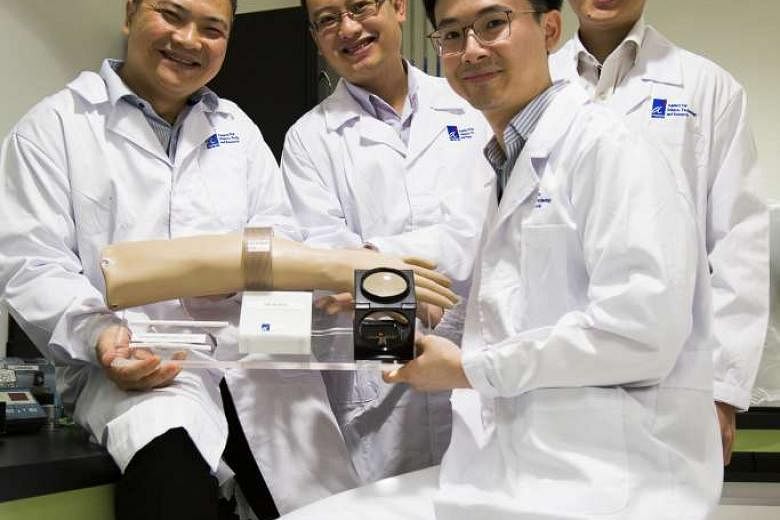When a person's kidneys fail and he needs dialysis, a straw-like prosthetic graft is surgically attached to an artery and a vein in his arm.
Then, three times a week, he visits a dialysis centre, where a machine is connected to the graft to remove waste and excess water from his blood.
Apart from the inconvenience and discomfort, he leads a relatively normal life.
But the story does not end there.
About 62 per cent of prosthetic grafts fail within a year due to the narrowing of the openings between the graft and blood vessels. Once a graft fails, dialysis is not possible, and surgery is needed quickly, or else waste will build up in the blood with fatal consequences.
However, vascular surgeon Benjamin Chua says, a failing graft that is detected early can be fixed with minor outpatient surgery in which a balloon or a stent is inserted to widen the opening instead of replacing the entire graft.
In addition, a made-in-Singapore device developed by Agency for Science, Technology and Research (A*Star) scientists in collaboration with Dr Chua allows quicker and easier detection of failing grafts.
Failing grafts are now detected through an ultrasound, an angiogram or a CT scan, which are expensive - costing between $150 for an ultrasound and $600 for an angiogram - and troublesome as they require a trip to the hospital or a private clinic.
These procedures are also typically done only twice a year.
But the A*Star device allows real- time monitoring of the blood flow in the graft wirelessly, says Dr Tan Ee Lim, the scientist from A*Star Institute of Microelectronics who is leader of the project team.
The device comprises a graft embedded with sensors to collect blood-flow data and an external coil worn around the user's arm that reads the data and then transmits it to an external reader.
The external reader is paired with a mobile app that allows doctors to access the data on a tablet or phone over the Internet in just seconds.
There are no batteries. The device is powered by electricity generated when the external coil is worn around the part of the arm with the graft, through a process called "inductive coupling".
The team has completed a proof-of-concept study on the technology - which took four years to develop - to show that it works. So far it has received nearly $2 million in grants from A*Star.
The next step is to test the device in the laboratory and on animals for efficacy and safety. The technology is expected to be ready for clinical trials in five years.
The "smart" graft will be more expensive than conventional ones that cost between $800 and $2,000, but the team said it is still too early to say by how much, although the cost is expected to be "reasonable".
Dr Tan says monitoring a person's blood flow for signs of a failing graft could one day be as simple as wearing a wristband that is paired with a mobile app and can be used at home or at dialysis centres. "It will work just like the fitness bands commonly used today," he adds.

